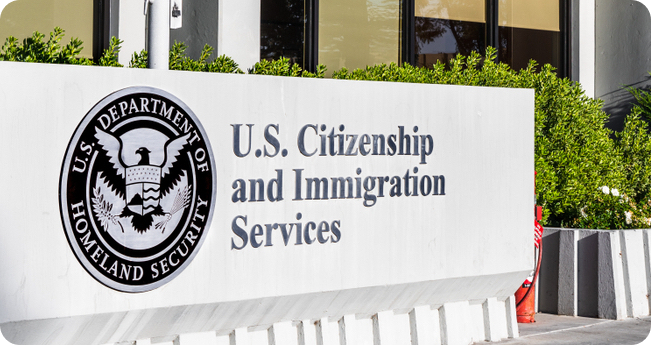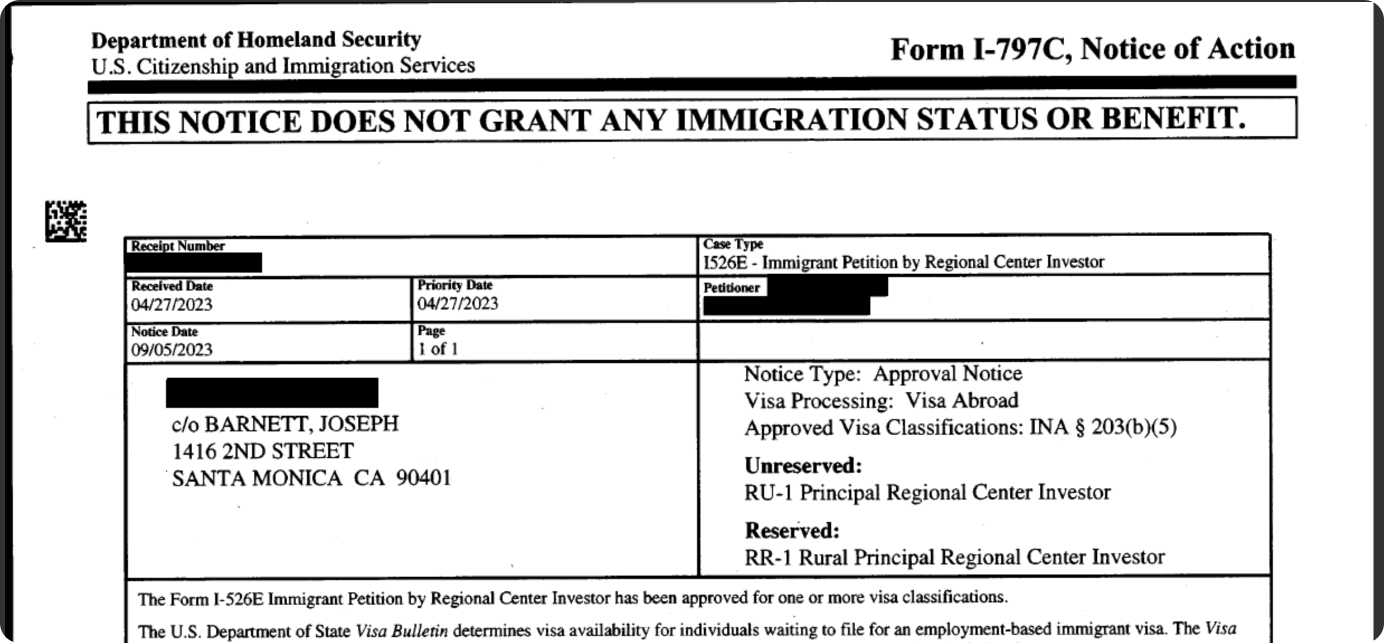The EB-5 Reform and Integrity Act of 2022 (RIA) promised to "prioritize the processing and adjudication of petitions for rural areas." And USCIS has delivered.
There was speculation as to what prioritized processing would mean. Many immigration lawyers predicted it would take a year or less.
EB5 United, a regional center, says it has "now received multiple investor I-526E approvals in less than 3 months." In total, the regional center claims to have 23 I-526E approvals to date (as of 09/21/2023), with an average processing time of six months per approval.
This supports the recent news we shared by immigration lawyer Joseph Barnett of a rural case processed and approved in just 131 days, under four and a half months.
Discover rural investments with full third-party due diligence.
Let's TalkRural processing times: This is one of many rural petitions approved in 5 to 10 months
Barnett's petition, one of nine or 10 approved rural petitions filed by Barnett’s firm, WR Immigration, was filed on April 27, 2023, and approved on September 5, 2023. The other petitions were approved in five to 10 months.
Originally, the project petition, the I-956F, was approved at the end of July 2023, after Barnett filed a mandamus lawsuit to compel USCIS to adjudicate the project petition in a timely manner.
Petitioners from India
Barnett's clients, whose petition was approved in 131 days, come from India. They are in the U.S. on an H-1B visa and an H-4 visa for the dependent spouse.
India is a country that suffers from a significant EB-5 backlog; recent estimates indicate that the wait time for an available EB-5 visa for Indians is nearly a decade.
The petitioners in this particular case can expect immediately available reserved visas as the Visa Bulletin is "current" for the three reserved categories (rural, high-unemployment area, and infrastructure). It's worth noting that the other two reserved categories do not have priority processing. Many immigration lawyers expect the standard processing for an investor petition to take at least four years.
Why are rural petitions being approved so quickly?
Barnett credits the RIA mandating priority processing for rural investments as the primary reason for the swift adjudication.
He points out that there were five sources of funds for the investment approved in 131 days, including gifts from family members. Importantly, all of the sources of funds originated from U.S.-based income, which he believes made it easier for the adjudicator to approve. Additionally, he highlights that he included seven years of tax returns for all the gifts, which aligns with the new RIA requirement.
USCIS finally delivers on a promise for faster processing
USCIS has lost a lot of goodwill with EB-5 investors and stakeholders over the past several years due to protracted processing times, despite continual assurances of more efficient processing. But we must credit the Immigration Service for finally delivering on the promise of faster processing, at least for rural investments.
Senators Grassley, one of the architects of the RIA, clearly aimed to promote rural EB-5 projects, as evidenced by the special benefit of priority processing and the largest allocation of reserved visas — 20% of all EB-5 visas, in contrast to 10% for high-unemployment projects and 2% for infrastructure investments. Barnett agrees that USCIS is following the mandate of Congress to prioritize rural investments.
Expectations for future rural processing: a few months to 10 months
Before these recent approvals, Barnett advised investor clients to anticipate that I-526E processing would take multiple years, as petitions filed in 2019 were still pending. The promise of priority processing in the RIA gave him hope, but, like others in the industry, he was uncertain about what that would entail in practice — or whether USCIS would prioritize rural petitions at all.
"Now, with these approvals taking five to 10 months, we can establish updated expectations," declares Barnett, prior to hearing about the EB5 United approvals in under three months.
Does Barnett have any advice for future rural petitioners? Investors should be aware that there's a specific processing order for any case, whether it's rural, related to high unemployment areas, or falls under another category: First, USCIS must approve the I-956F for the project; next, it will review any associated I-526Es, supposedly following a first-in, first-out system.
He advises investors committed to pursuing EB-5 to submit their I-526E as soon as possible to secure a spot in the queue. Barnett recommends considering a partial investment, if necessary, to secure the earliest available position.
For other immigration lawyers, Barnett reminds them that the more rural I-526Es are approved, and the faster they are approved, the sooner there will be "visibility for demand" for reserved visa numbers. This is likely to result in a Final Action Date being issued in a future Visa Bulletin.
See the EB5 United blog post "Multiple Rural I-526E Approvals in less than 3 Months"





